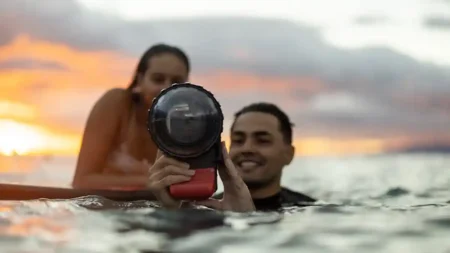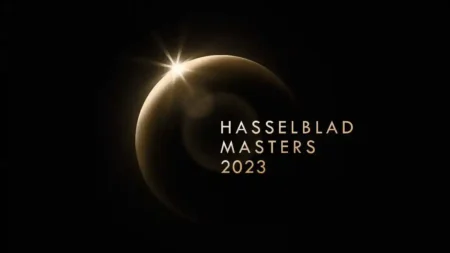What is the Google Pixel 3a?
You may have heard quite a bit about Google’s Pixel’s range. As the name suggests, this range of phones is specifically targeted at photographers, with the latest flagship phone, the Pixel 3, being a very impressive device.
More recently, Google has introduced a new Pixel 3a model, which is designed to appeal to those keen to get into the Pixel ecosystem but are on a lower budget..
The good news for photographers is that while there are some parts of the phone which see cuts to keep the price down, the camera is the same as found on the Pixel 3, while there’s also the same native camera app with its impressive set of features.
Like other Pixel phones, the 3a comes in two sizes – the standard Pixel 3a and the Pixel 3a XL. The camera is the same on either phone. At the time of writing this review, the standard Pixel 3a can be bought for around £399, while the larger Pixel 3a XL is priced at at around £469. If we compare this with the price of the Pixel 3 – £589, or the Pixel 3 XL – £719, we can see that the 3a range gives you a good price saving.
Features
As I’ve already mentioned, the Pixel 3a uses the same camera setup as the flagship Pixel 3. Google is relatively unusual in the current smartphone market (especially when thinking about flagship models), in that it only includes one lens/one sensor. You get a 12.2 megapixel camera with a 28mm (equivalent) f/1.8 lens.
The native camera app is relatively simple, but you get all of the same features as found in the Pixel 3. That means you get the very impressive Night Sight mode, which is designed for shooting in low light and creates the impression of a long exposure by merging together a series of short exposures. There’s also the useful “Portrait” mode which can be used for creating shallow depth of field effects – and can be used for both human and non-human subjects.
Video recording is available at up to 4K at 30fps, with Full HD options also available. Onboard memory is limited to 64GB, with no option to expand it – this could be an issue if you’re intending too take a lot of images and video and want to keep them all on your phone, but don’t remember you can backup to Google Photos to save space.
Another interesting and useful feature for photographers include the ability to shoot in raw format, which you can switch on and off from the main camera screen. As there is just one lens, you’ll be relying on digital zoom if you need to get closer to your subject (and you can’t do that physically).
![]()
Build Quality
One of the main differences between the Pixel 3 and the Pixel 3a is to the build quality. The Pixel 3a feels noticeably lighter and has a more “plastic” feel to it. Once shrouded in a case, you may not notice this so much – but you will need to be aware that the Pixel 3a is not water resistant like the Pixel 3. That means you’ll probably want to be careful if shooting with it in a heavy rain shower, but otherwise shouldn’t be too much of a problem.
The standard Pixel 3a has a 5.6-inch OLED display, with the Pixel 3A XL sporting a larger 6.0-inch display. Both have fairly large bezels when compared with the standard Pixel 3 phones, which is an indicator of a price saving. You might argue that the Pixel 3a has a somewhat “plain” or “boxy” appearance, compared to the sleeker curves of phones like the Huawei P30 Pro or the Samsung S10+, but some may even prefer this simple design.
Opening the native camera app, you’ll find that there’s not a huge amount to work with. It’s not one of the more complex native apps, which is either a good thing or a bad thing depending on how you look at it. If you think of the Pixel 3a as a bit like a “point and shoot”, its basic operation makes it easy to get going. On the other hand, enthusiast photographers may be disappointed to discover the lack of a manual mode. At least you can shoot in raw format mode though.
Performance
We were very impressed by the performance of the Pixel 3, and since the 3a uses the same camera setup, we had every confidence that it would also be excellent here. The Pixel 3a uses a slower processor than the Pixel 3, but I haven’t noticed that it impacts on image quality.
Straight out of the camera, JPEG images show a pleasing level of saturation with bright colours and there’s also plenty of detail. Shooting in low light with the standard mode produces some decent results, but it’s the specific Night Sight mode that puts in the most impressive performance. You can find yourself in almost complete darkness and still able to take a photo which shows the subject well – with accurate colours too.
Despite only having one lens, the Pixel 3a’s Portrait mode is a great performer – thanks mostly to machine learning which helps the phone detect outlines and create the effect. It works best with humans, but it’s also useful for other subjects, too. If the outline is very complex, the 3A may struggle, but that is to be expected.
One thing to watch out for is HDR+, which is an option you can choose to switch off. When left on, there are occasions when it goes a little overboard and produces unrealistic images – if you shoot in raw format, you’ll be able to “rescue” any images that might have been rendered a little strangely, though.
Google Pixel 3a Sample Photos
Below is a selection of sample photos shot with the Google Pixel 3a during our test.
![]()
![]()
![]()
![]()
![]()
![]()
Verdict
There’s a lot to like about Google’s Pixels phones – I’ve always been impressed by them. The decision to bring a cheaper model to the market which crucially keeps the same camera is a good one, and we can see the Pixel 3a being a very popular device.
Images directly from the camera are very pleasing, and being able to shoot in raw format is useful. We would like to see a more advanced camera shooting mode if we’re being picky, but you could always download a more complex camera app if you wanted to.
Having just one lens feels like somewhat of an odd decision in the current smartphone climate. You won’t be able to zoom in optically, but at least Portrait mode is still rendered very well.
Overall, the Pixel 3a represents excellent value and a great way to pick up one of the best smartphone cameras on the market while saving yourself a fairly large chunk of change.


